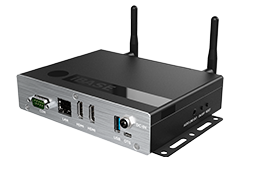Today we live in a society of technology and innovation that has made life easier and transformed our daily lives. Advances in networking technologies have enabled faster communication among more people all over the world and faster flow of information across nations. As a global leader in networking solutions, IBASE offers high-performance network appliances for different market segments and applications such as enterprise network security, IoT security, advanced threat protection, unified threat management (UTM), firewall, VPN, content filtering, SDN/NFV/SD-WAN, vCPE/uCPE, and remote access server. Our network platforms feature four to 66 high-speed Gigabit Ethernet ports and expansion module cards, providing multiple functions and flexible configurations.
Modular Design with High Expandability
The modular design of IBASE network appliances ensures high expandability and scalable functionality while reducing total cost of ownership. This approach has become standard to enable rapid customization and easy configuration with modules that can be interchanged and combined to meet customers' optimal requirements. IBASE network appliances offer flexible customization by using the same physical slots to support different combinations of network interface controller (NIC) modules, hard drive trays, or empty slots.
The plug-and-play hot-swappable modular designs make it easy to configure and manage Ethernet ports. The firmware-based bypass mechanisms help provide network failover and high availability. It provides seamless switching to a failover/backup system in the event of a crash, ensuring continuous operation and minimizing potential downtime. In addition, various storage options with RAID control are available to enhance data redundancy and performance. The enhanced wireless connectivity supports 5G, LTE, Bluetooth, WiFi/WiFi 6, and IPMI for remote server management and monitoring.

RELATED PRODUCTS
.png)
INA7605
Performance 2U Network Appliance with Dual 5th Gen Intel® Xeon® Scalable & up to 64 GbE Ports

INA3600
Enterprise 1U Network Appliance with 10th Gen Intel® Xeon® / Core™ / Pentium® Gold / Celeron® Processor & up to 14 GbE Ports
uCPE/SD-WAN & MEC Appliances
With the development of network function virtualization technology, the telecom infrastructure from LTE to 5G has undergone tremendous changes, promising ultra-high speed and driving significant innovation in the edge market. Some latency sensitive applications including AR, VR, video delivery and factory automation have moved to the edge. Rugged conditions in the edge environment have posed some challenges on the hardware design, such as extreme temperature requirements, limited space and limited power. At the customer’s premises, traditional network appliances such as router, firewall, IPS, DDoS have been virtualized as VNFs, ready to be installed as applications in uCPE (Universal Customer Premise Equipment) with SD-WAN as the first commercialized application.A SD-WAN (Software-Defined Wide Area Network) uses software-based network technologies to virtualize WAN connections that allow enterprises to leverage any combination of transport services, including MPLS, LTE, 5G and broadband internet services, and to securely and intelligently connect between branch offices and HQ data center or retail stores and enterprise cloud. IBASE provides Intel and AMD-based uCPE/SD-WAN appliances for middle to high-level network computing hardware platforms designed to assist enterprises in centralized monitoring and management, enable stable and efficient cross-regional network transmission, reduce total cost of ownership, and simplifies deployments with ZTP (Zero-Touch Provisioning).

RELATED PRODUCTS
Technology Brief
Hardware Key to Meeting 5G and Edge Computing Challenges
5G is rapidly expanding the possibilities for edge computing and advanced networking in industrial IoT (IIoT), allowing manufacturers to better take advantage of data, automation, and artificial intelligence to truly transform operations. (This article originally appeared on insight.tech.)
Success Stories
Customer case studies highlighting the successes customers and partners have had with IBASE products and solutions.
Data Center Firewall Application
IBASE 1U network appliance was deployed in a data center in the US as a firewall solution. We helped the customer launch the new product on the same day Intel had launched the supported chipset.

























































.png)










.png)

.png)





.png)
.png)

.png)
.png)


